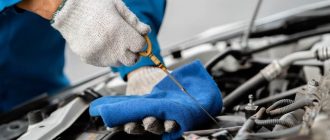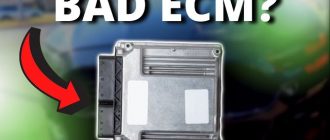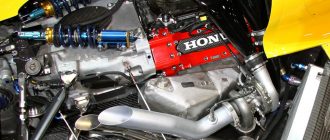## **How Many Parts Are on a Car Engine?**
The car engine is a complex machine composed of numerous parts working together to generate power and drive the vehicle. The exact number of parts can vary depending on the engine type, size, and design, but a typical automotive engine consists of several thousand individual components.
**Major Components of a Car Engine**
The primary components of a car engine include:
– **Cylinder Block:** The main housing that contains the cylinders and other engine components.
– **Cylinder Head:** Mounted on top of the cylinder block, it contains the combustion chambers and valves.
– **Pistons:** Reciprocating components that move up and down within the cylinders to compress and ignite the air-fuel mixture.
– **Connecting Rods:** Link the pistons to the crankshaft, transferring the reciprocating motion into rotary motion.
– **Crankshaft:** A rotating shaft that converts the linear motion of the pistons into circular motion.
– **Camshaft:** Governs the opening and closing of the valves, coordinating with the crankshaft.
– **Valves:** Control the flow of air and fuel into and out of the combustion chamber.
– **Timing Belt or Chain:** Synchronizes the movement of the crankshaft and camshaft.
– **Oil Pump:** Circulates oil throughout the engine to lubricate moving parts and maintain temperature.
– **Water Pump:** Circulates coolant through the engine to regulate temperature.
– **Fuel Injection System:** Delivers fuel into the combustion chamber in a controlled manner.
– **Ignition System:** Generates a spark to ignite the air-fuel mixture.
– **Exhaust System:** Removes exhaust gases from the engine and muffler.
**Subcomponents of Major Components**
In addition to the core components listed above, numerous subcomponents make up each major part of the engine.
– **Cylinder Block Subcomponents:**
– Cylinder Liners
– Oil Passages
– Coolant Passages
– Timing Chain Cover
– **Cylinder Head Subcomponents:**
– Combustion Chambers
– Intake and Exhaust Ports
– Valve Seats
– Valve Springs
– **Piston Subcomponents:**
– Piston Rings
– Piston Pin
– **Connecting Rod Subcomponents:**
– Big End Bearing
– Small End Bearing
– **Crankshaft Subcomponents:**
– Crankshaft Bearings
– Flywheel
– **Camshaft Subcomponents:**
– Cam Lobes
– Camshaft Bearings
– **Valves Subcomponents:**
– Valve Stems
– Valve Seats
**Auxiliary Components**
Various auxiliary components support the engine’s operation:
– **Air Filter:** Cleans the air entering the engine.
– **Fuel Filter:** Removes impurities from the fuel.
– **Alternator:** Generates electricity for the vehicle’s electrical system.
– **Starter:** Engages the flywheel to start the engine.
**Total Number of Parts**
Estimating the exact number of parts in a car engine is challenging due to the variability in engine designs and the inclusion of various sensors, gaskets, seals, and other small components. However, a rough estimate suggests that a typical four-cylinder engine may contain around 2,000-3,000 parts, while larger V6 or V8 engines can have as many as 4,000-6,000 individual components.
**Importance of Regular Maintenance**
Given the complexity and number of parts involved, regular engine maintenance is essential to ensure optimal performance, reliability, and longevity. Regular oil changes, filter replacements, and inspections help prevent premature wear, improve efficiency, and detect potential issues early on. Properly maintaining your car’s engine can extend its lifespan, reduce operating costs, and ensure a safe and enjoyable driving experience.




